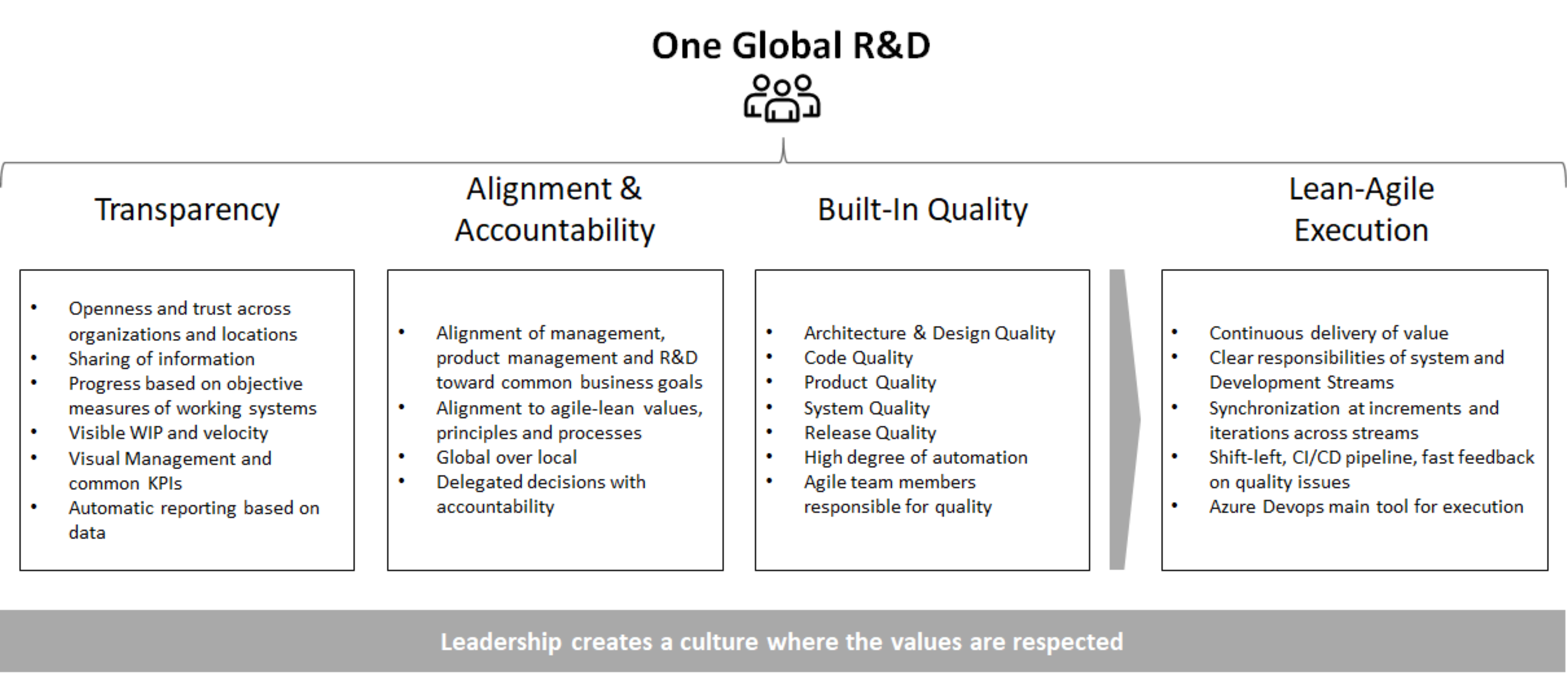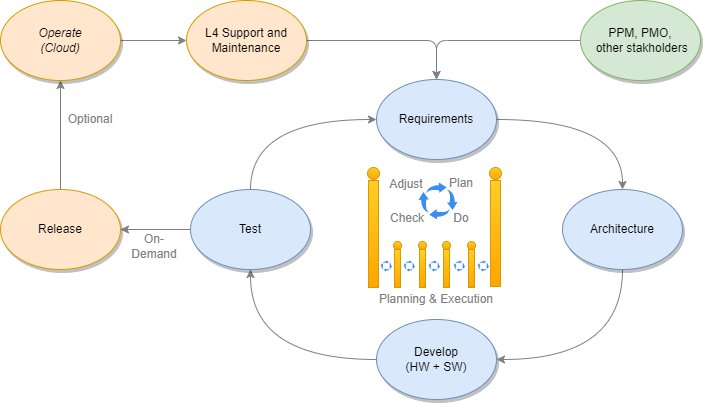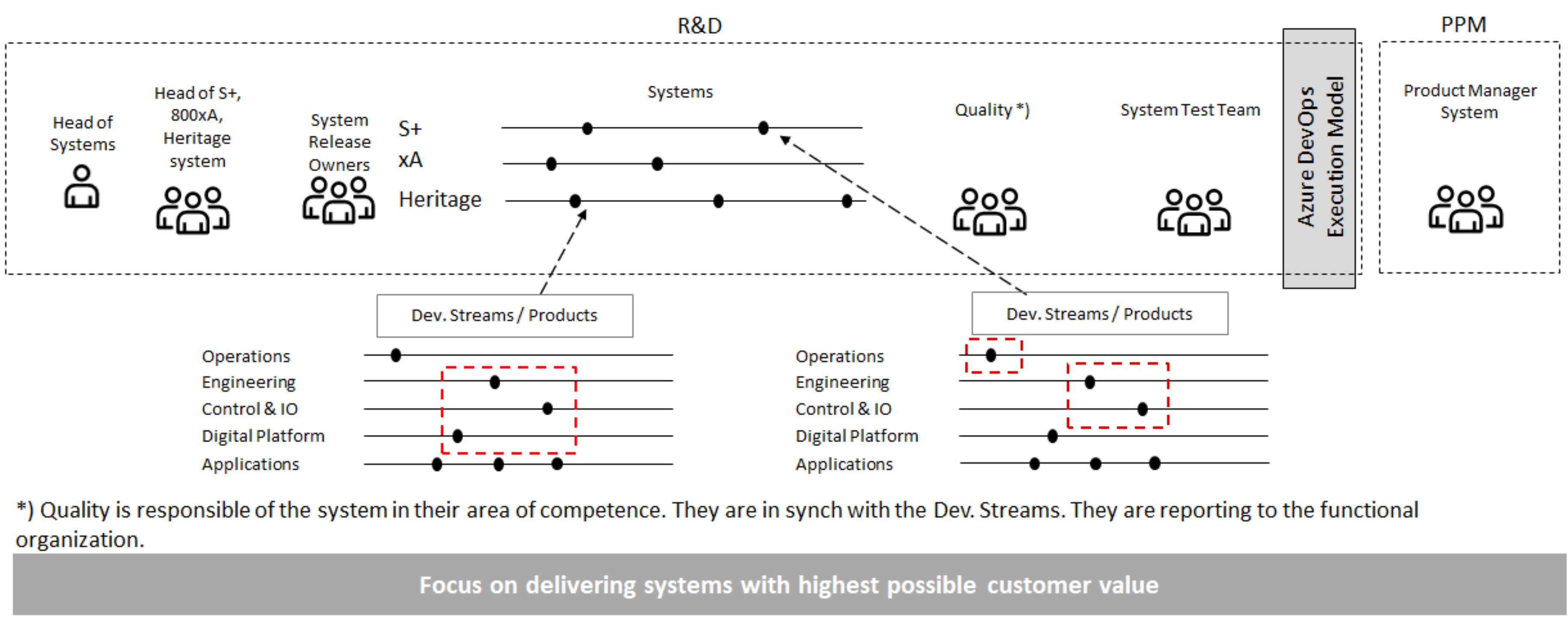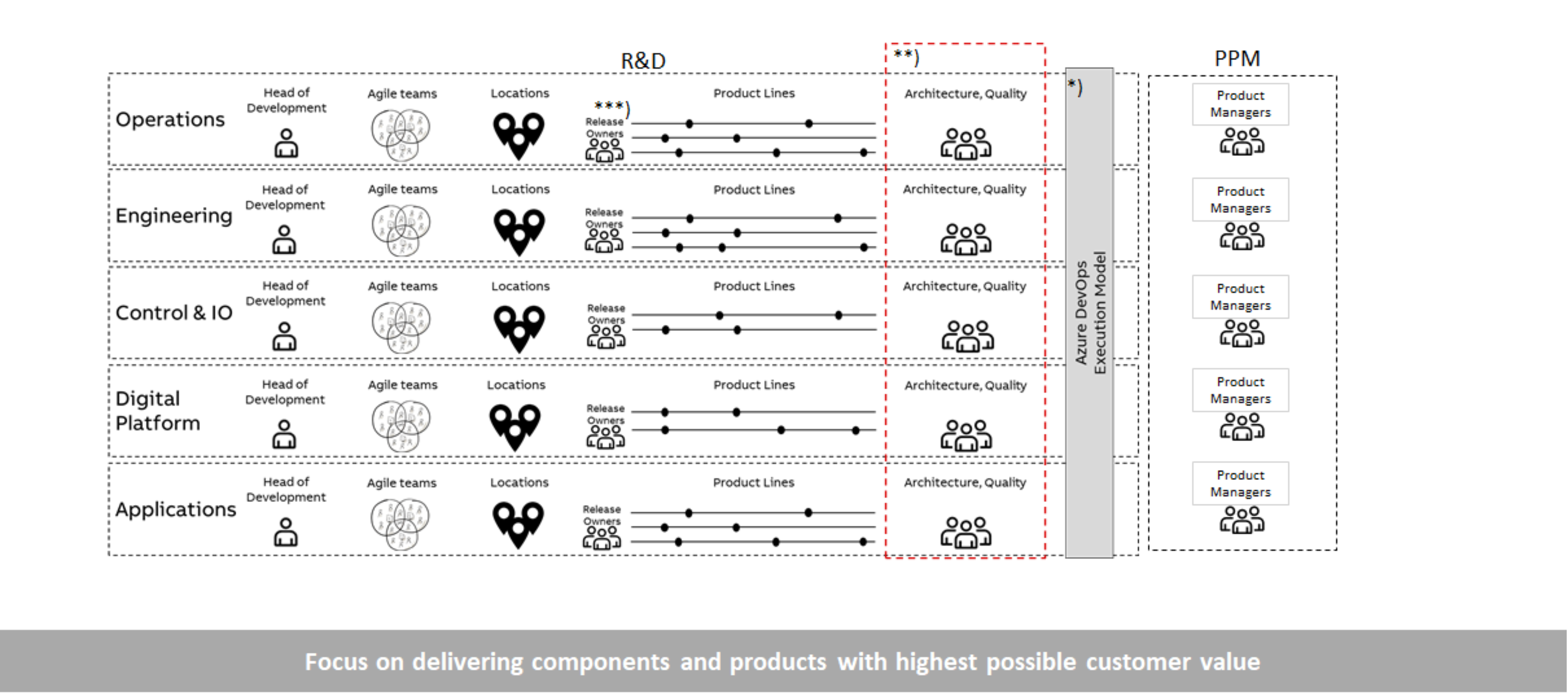Lean-Agile Planning and Execution
Organizations adopt lean and agile principles, processes, and best practices to develop and deliver high-quality systems, products, and services faster. Lean focuses on decreasing effort and cost and reducing waste. Agile enables incremental deliverables of working software and hardware by cross-functional teams.
The challenge is to scale lean-agile methodologies to large organizations. It requires a change across the whole PCP organization (PPM, R&D, Operations, etc.) to support the transformation. The weakest link in the continuous flow of work across the organization can become a blocker to how successful the agile transformation is.
Lean-agile values and principles
The lean-agile core values ("transparency", "alignment & accountability", "built-in quality", and "lean-agile execution") represent the fundamental beliefs that are the key to success and improving efficiency in the organization.

The lean-agile principles are the guiding the organization to achieve a lean-agile way of working. Every process, guideline, and tool should be benchmarked against these principles to ensure they are not broken.
- #1 – Take an economic view
- #2 – Apply systems thinking
- #3 – Assume variability; preserve options
- #4 – Build incrementally with fast, integrated learning cycles
- #5 – Base milestones on the objective evaluation of working systems
- #6 – Make value flow without interruptions
- #7 – Apply cadence, synchronize with cross-domain planning
- #8 – Unlock the intrinsic motivation of knowledge workers
- #9 – Decentralize decision-making
- #10 – Organize around value
See SAFe principles for further information.
Lean-agile key competencies
Management must have a good understanding of the lean-agile values and principles to lead the transformation and develop the necessary competencies in the organization. Some examples of the key competencies required for the lean-agile transformation are:
- Lean-agile leadership
Lean agile leaders drive change and operational excellence, leading by example to help ensure teams reach their potential. This involves communicating the lean-agile mindset, principles, and practices. - Team and technical agility
Teams must possess certain vital skills and adhere to Lean agile practices to create well-designed solutions quickly. Ensuring the technical agility of teams is especially important, as they are the ones who ultimately perform the actual work that will be delivered to your customers. - DevOps and release on-demand
The establishment of a continual, ongoing pipeline for deliverables is vital for creating value to meet your customers’ needs. Business solutions and Lean systems engineering: The more organizations facilitate Lean agile practices to drive blueprints, development, and deployment, the more innovative they can be. - Lean portfolio management
A sound organizational strategy that includes financial considerations, portfolio management, and compliance-related aspects is essential to be successful.
Lean-agile and PCP R&D processes
SAFe focuses on lean-agile planning and execution, but the framework does not explain all the details people in PCP R&D need to know to perform their daily work. How to write epics, features, and stories, how to do design, code reviews, and tests, how to work with open source, export control, etc.
These details are added to PCP R&D's process framework. Here, SAFe and PCP R&D processes complement each other - the activities described in PCP R&D's processes use the lean-agile framework to iteratively plan and execute the activities.

The strategy for PCP R&D processes is to describe only the key elements in lean-agile planning and execution and rely on the SAFe framework for more information, training, and best practices.
Streams and teams
PCP R&D is organized into system streams, development streams, and teams.
System streams
The system stream integrates deliverables from the development streams, verifies and validates the system, and makes the releases available to other organizational functions.

Development streams
The development streams develop hardware and software, integrate and test them, and release them to the customer. The development stream can also provide incremental/intermediate deliverables to the system stream for continuous integration and system tests.

Teams
The development streams consist of several development teams that develop, test, and maintain products and components. The system stream does not develop any functionality but can have several test teams performing tests on the systems.